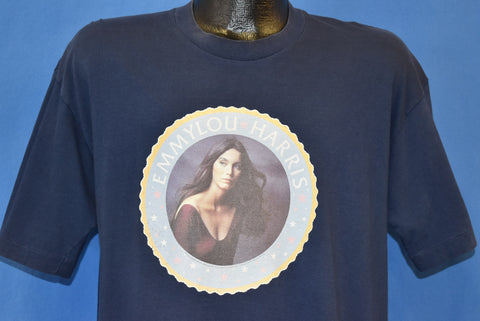We were recently graced with this heavenly find from the collaborative album featuring Dolly Parton, Loretta Lynn, and Tammy Wynette, Honky Tonk Angels. Released in '93, the amalgamation of country music's leading women garnered praise for its nostalgic celebration of the past.
The album featured the hit song, "It Wasn't God Who Made Honky Tonk Angels," originally sung by Kitty Wells. It became the first number one hit for a solo woman in country music. Wells' song paved the way for artists like Parton, Lynn, Wynette, and Patsy Cline to record songs that called out men for being unfaithful. Wells received backlash for the song, prohibited from performing at the Grand Ole Opry, country music's premier stage. Despite the industry resistance, "It Wasn't God.." remained at the top of the charts for six weeks.
Let's take a look back at the rise of country music and the history of its birthplace, the Grand Ole Opry in Nashville, Tennessee.

In the 1920s, Nashville radio announcer, George D. Hay, founded the Grand Ole Opry as a weekly country music concert. Then known as Barn Dance on WSM, the show has been recognized as the catalyst for the spread of country music across America.
Hay, along with musician Uncle Jimmy Thompson, launched the program in 1925. In its early days, Barn Dance broadcast Bill Monroe, the Crook Brothers, the Gully Jumpers, and Fiddlin' Arthur Smith regularly. Renamed to the Grand Ole Opry, the show quickly gained a following and outgrew their studio space. Thus, the Opry relocated to Ryman Auditorium in 1943.
Before the Opry took to the Ryman stage, it had been under the ownership of Lula C. Naff. Naff brought world-renowned entertainers such as the Italian opera singer Enrico Raruso, U.S. Presidents Roosevelt and Taft, Marian Anderson, and countless others. The very first event to be sold out at the Ryman was a lecture by Helen Keller and Anne Sullivan Macy in 1913.
Hosting the Grand Ole Opry, the Ryman Auditorium saw the likes of Elvis Presley, Roy Acuff, Hank Williams, Webb Pierce, Faron Young, and Martha Carson to name a few. With 3,000 seats, the Opry could accommodate their rapidly growing fan base into a live audience.
The genre was becoming more accepting of women, as artists like the Honky Tonk Angels, Jean Shephard, Rose Maddox, Margie Bowes, Marion Worth, and Norma Jean were inducted as members of the Grand Ole Opry.
Over time, the show outgrew Ryman, too, which began to crumble due to urban decay. As a result, a new venue complex was constructed for the Opry in a less urbanized area of the city. The complex included the Opryland USA Theme Park and the Opryland Hotel, first opened in 1972.
After the Opry abandoned the sinking Ryman ship, fans mourned the historic auditorium. So, an 8-foot square was cut from the wooden stage floor, and from that a 6-foot wide circle was brought to the new Opry stage. That wooden circle has since become a symbol of the musicians whose boots touched the Ryman stage.

But fans remained loyal to the Ryman and its history and preservation. In the early 90s, country singer Emmylou Harris revitalized the crumbling Ryman Auditorium, performing a series of concerts and a subsequent live album titled, "At the Ryman."
Following Harris' performances, the Opry returned to Ryman for a benefit concert in 1998. Since then, the show returns for a 3-month period in the winter every year to pay tribute to the Opry ancestors.
Today, the Grand Ole Opry continues as the longest running radio show in U.S. history. The show is said to return to television in the new year on a new network, appropriately called Circle Media.
Shop our country music collection here!



